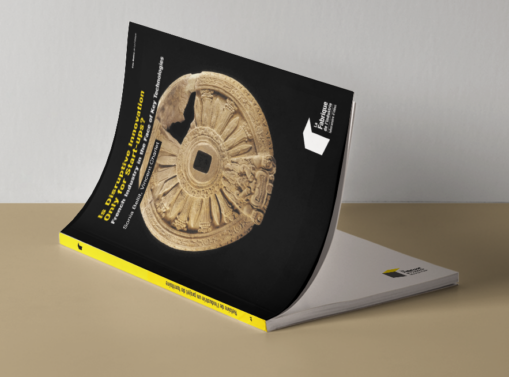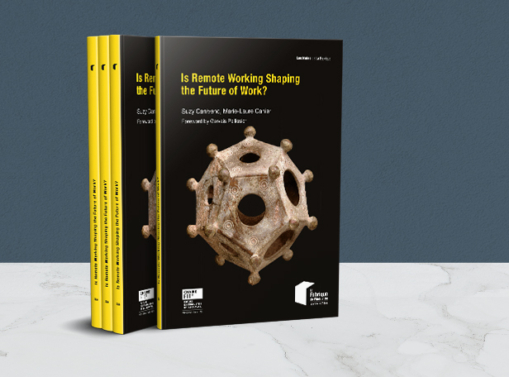Is France at risk from protectionism?
This note analyses how France is exposed to the risk of protectionism by examining how our industrial companies integrate into global value chains.
Donald Trump’s arrival in power with a sovereignty-based programme, announcements of higher customs duties on numerous goods, and the condemnation of Chinese trade practices have put protectionism and its consequences for international trade back onto the global agenda.
This note analyses how France is exposed to the risk of protectionism by examining how our industrial companies integrate into global value chains. To do this, we employ the OECD’s TiVA database, which considers the value added by international exchanges. We compare the position of France to that of its European counterparts, like Germany, Italy, Spain and the United Kingdom, as well as China and the United States. Overall, the analysis provides several elements of an answer.
Firstly, the European Union (EU) is more inserted into global value chains than the United States, but less so than China. This insertion can be measured by looking at a country’s gross exports and evaluating the share of re-exported foreign imports. In 2015, the value added imported from abroad amounted to 9% of US exports, 17% of Chinese exports, and 12% of European Union exports outside the EU (taking it as a country). Naturally, this indicator is partly connected to the size of the country considered: the bigger it is, the more own resources it has and the less it depends on imports. For this reason, the exports of countries like France and Germany include 21% of foreign inputs, which indicates that they are more inserted into global chains than the United States and China.
In addition, for all of the countries studied, we observe a significant decrease in the foreign content of exports since 2011, which fuels the debate on a slow-down of globalization and the impact of recent protectionist measures. In reality, in Europe and the United States alike, this apparent disintegration of global value chains can be almost wholly put down to the decrease in prices of raw energy materials. The situation is different in China, where on the contrary, this phenomenon is combined with a more established trend for regionalization: the country clearly wants to boost its domestic market and reduce its dependence on foreign imports, and is proving extremely efficient in doing so.
Secondly, European markets consume a lot more value added produced in China than the opposite, and this gap is widening fast. In fact, Chinese value added contained in final French manufacturing demand rose continuously from 2005 to 2015, from 2.5% to 6.9%. As a result, China outstripped the United States at the start of the 2010s as the leading supplier to European industries. This increase is not specific to any particular sector, but a feature of all European import sectors and all Chinese export sectors. In contrast, European and French value added contained in Chinese final manufacturing demand followed a steady downward trend over the same period. Except for Germany, which recently dropped below 2%, statistically it is in fact barely detectable. Similarly, China currently provides more value added to US manufacturing demand than the European Union does.
Although the presence of numerous Chinese consumer goods on our European markets has been obvious for a long time, previous results point to two new observations. The first is that this Chinese commercial domination also applies to raw materials, equipment goods, and other intermediate goods that make up industrial value chains. The other observation is that the idea at one point widely put forward by iPhone case studies, that actual Chinese value added was only involved at the low-cost stages of setup and assembly, has not held true. China in fact is increasingly present on foreign markets and less and less dependent on the rest of the world.
Thirdly, goods produced by French or German industries go through more production stages located abroad before reaching the final consumer than Chinese and US products do (an average 0.6 foreign stages starting from French or German producers, compared to 0.2 from US producers, and 0.3 from their Chinese competitors). Since 2005, European industries (except the UK) have seen this indicator slowly rise, while it has sharply dropped in China. The metallic goods sector is a significant explanatory variable of this phenomenon: in fact, these basic goods go through production stages abroad more often than others before reaching their markets, but this figure has dropped to different extents in all countries since 2008-2010. It is difficult to say whether tariff measures on steel and aluminium play a significant role here, in particular in comparison with the effects of the crisis that hit the steel industry in 2008 and the gigantic overcapacities maintained by China in this sector. In any case, in the United States, this particular feature of the metallurgy sector is so marked that it is enough to alter the general outsourcing indicator for the entire manufacturing industry, while it does not manage to reverse the general trend in France and Germany. In China, things are different again: since all sectors have been shifting towards the domestic market since 2008, the general refocusing is all the more obvious.
Fourthly and lastly, we determine the contribution to the creation of value of the different stages in the production chain. It is frequently stated that value creation takes place increasingly upstream in the manufacturing process (especially at the design and R&D stages) and downstream (marketing, added services, etc.), but that it is more and more tenuous at the manufacturing stage itself. The well-known image of the “smiling curve” has made its mark. We show that this vague “U shape” is valid if we measure the value created per worker. However, to evaluate the economic weight of these activities at a given geographic scale, we need to take into account the labour mobilized; and the resulting shape is very different. In France, as in other European countries, production is the primary source of value creation in industrial value chains.
In conclusion, we highlight the negative impact of protectionism on global growth and on commerce between states: these observations have been scientifically established for a long time and our results bring an interesting perspective. Above all, China has a totally unique “citadel” status on the global arena, despite its recent accession to the WTO. The country is both impregnable and conquering, and is managing to secure a foothold in global value chains as a supplier to foreign markets, while rapidly increasing its capacity for self-sufficiency. This is a double achievement that is clearly visible in data from the last decade. Put another way, if the public debate on protectionism leads us to look back and forth between the United States and China, we should not forget that industries on these two continents have adopted radically different trading behaviour in the last ten years. China’s affirmation as a fully-fledged industrial power is the most striking observation that emerges from our statistical portrait.
In the rest of the world, and in particular France and Europe, putting aside the price variations of energy resources, we cannot to date detect a slowdown in globalization or in the activity of industrial value chains. The number of protectionist measures is on a rising trend; yet the average rate of customs duties is tending to drop and it is difficult today to identify any signs of a slow-down. Moreover, European economies are highly inter-related, in a stable, free-market zone. French and European industries obviously benefit from their global insertion. When talking of protectionist risk and, even more so, when seeking tools for reciprocal trade, the question mainly centres on China.
To order the book, please go to the Presses des Mines website.
Please find below a video interview featuring Anne-Sophie Alsif, in which she tries and addresses the strengths and weaknesses of the European strategy when dealing with international competition.




